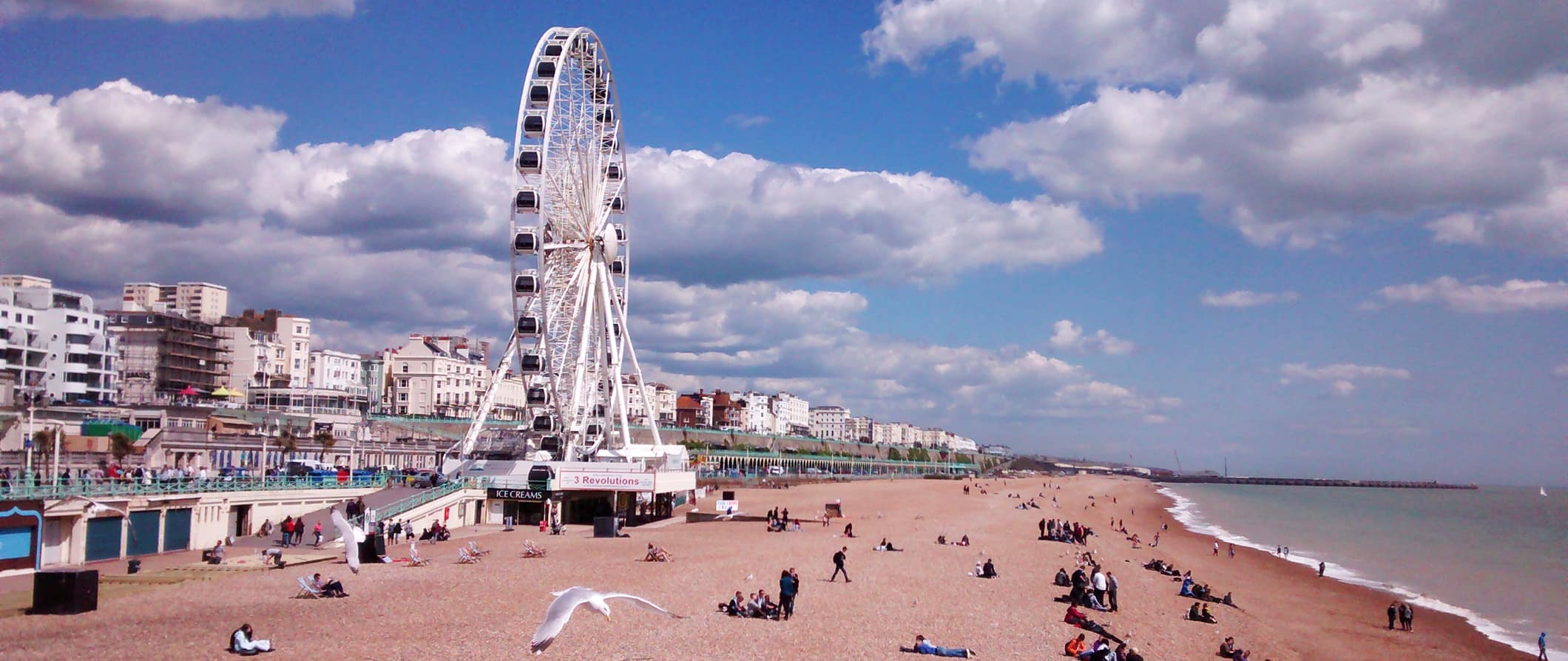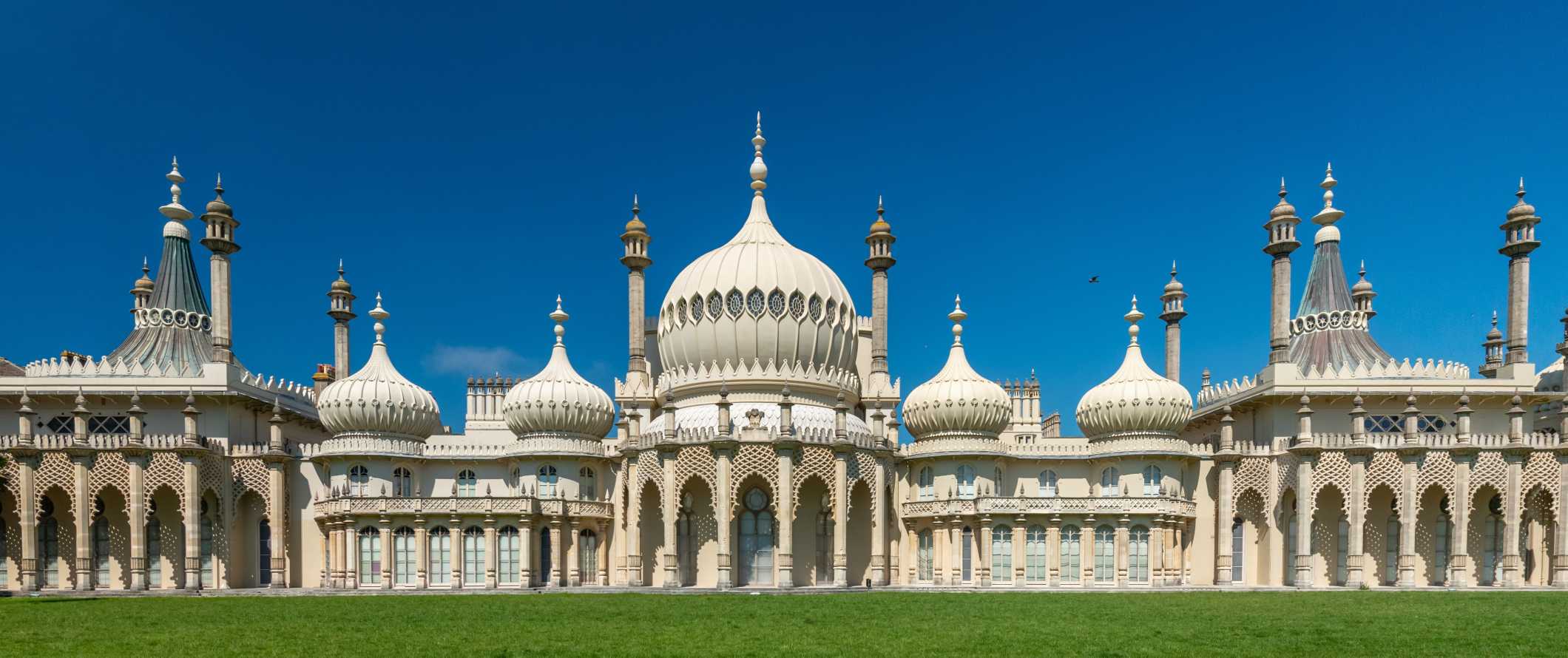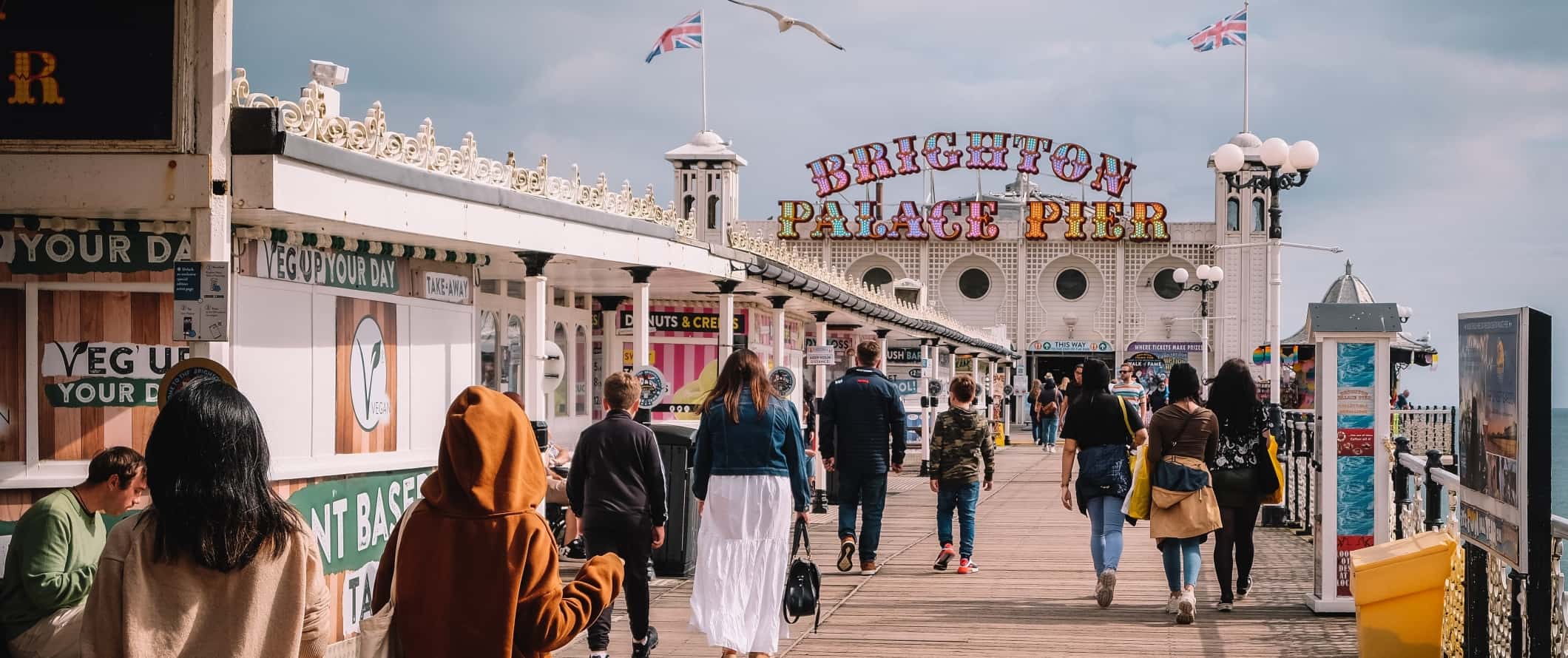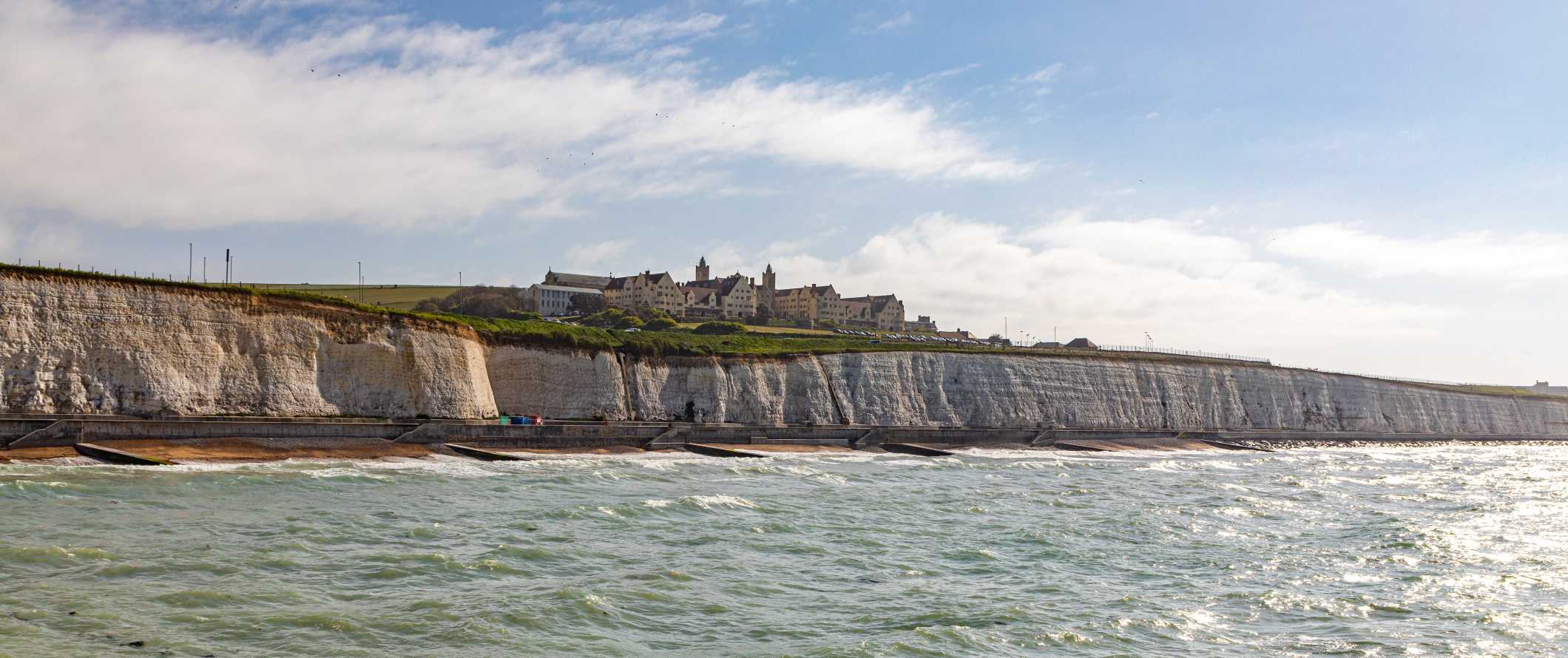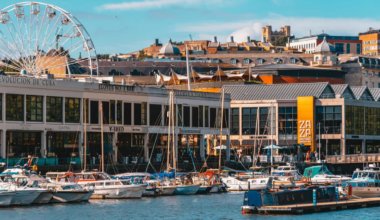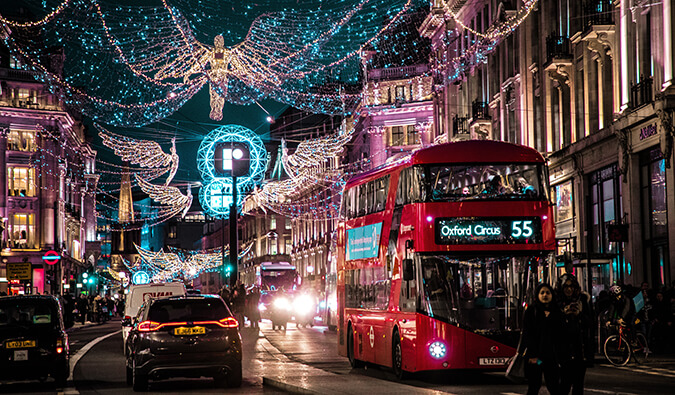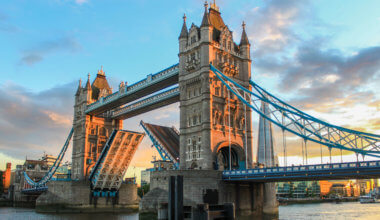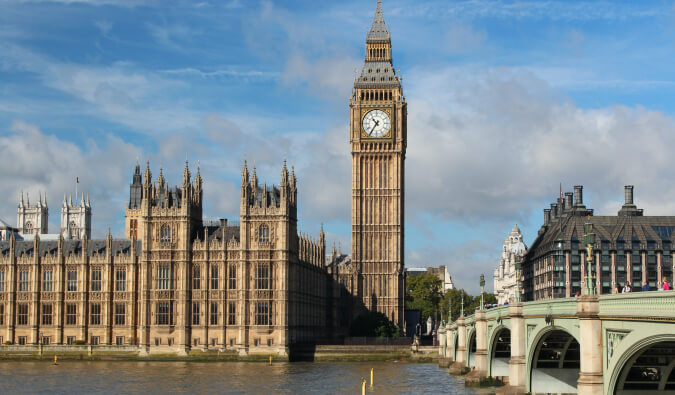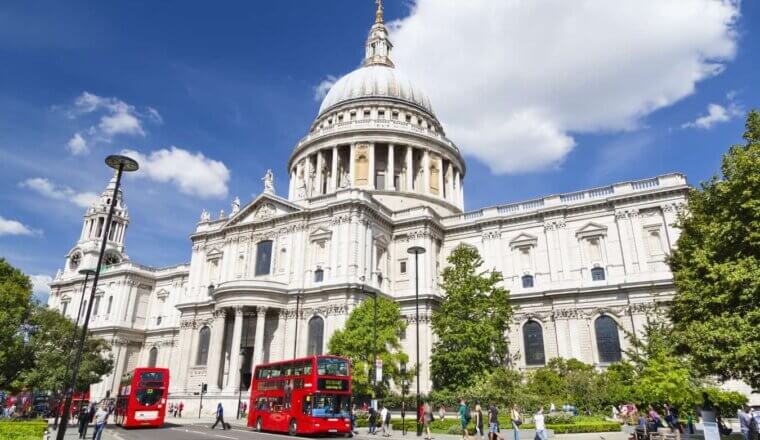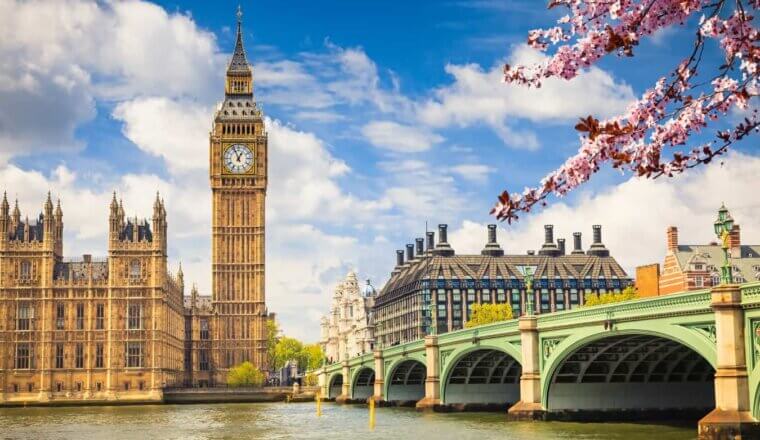Brighton is a seaside resort town on the southern coast of England that’s known for being quirky, bohemian, artsy, and very LGBTQ-friendly. It’s an extremely popular place to visit in the summer.
I really like this town — even during the summer when it gets crowded!
Considered the hippest city in the UK, Brighton comes to life during the summer with festivals and events. There’s a lot to do here beyond just going to the beach or shows and I think people really miss out on the charm of the city when they just focus on those two things. Brighton is actually a fun year-round destination for anyone looking for a short trip from London.
This travel guide to Brighton will help you plan a fun, affordable, and off-the-beaten-path visit to this underrated city!
Table of Contents
Top 5 Things to See and Do in Brighton
1. Wander Brighton Pier
Brighton’s most famous attraction, the Brighton Palace Pier is a great place for a stroll. It’s particularly beautiful during sunset and sunrise. There has been a pier here since 1823 but the pier in its current form opened in 1899. It has been through both world wars as well as many, many storms (some of which destroyed the previous versions). During the day, lots of people come and hang out at the arcades, ride the rides, and restaurants. It’s great for relaxing and people-watching. At night, it’s lit up with 67,000 lights which makes for a pretty cool spectacle.
2. Visit the Royal Pavilion
Completed in 1823 for King George IV, the Royal Pavilion is Brighton’s most iconic building. Although King George was only able to visit the Royal Pavilion twice, it was often used as a royal summer home and, during World War II, it was transformed into a military hospital. Many of the rooms, including the banqueting room, the kitchen, the saloon, the music room, and three bedrooms have been restored to reflect how it would have looked during the Regency era. There’s also a pretty garden in front that you can visit for free to get photos of the exterior. Admission is 17 GBP and includes unlimited return visits for one year.
3. Spend time at Brighton Beach
Brighton Beach can get touristy and crowded in the summer, but it’s the best place to swim (be warned, the water is never warm!) and get some sun. It’s a pebbly beach but there’s plenty to do with lots of watersports in the sea, the nearby Pier, and a selection of shops and cafés. At the western end of Brighton Beach, near Hove Beach, there is a colorful row of beach huts perfect for some Insta-worthy pictures and a 4-mile (6-kilometer) promenade that’s great for a stroll with nice views.
4. Day trip to Seven Sisters Country Park
Located within the South Downs National Park, the Seven Sisters Country Park is a great place for a quiet afternoon in nature, with an abundance of flora and fauna. The park includes a number of chalk cliffs (almost 700 acres’ worth) that run right up to the seaside. You can find several walking trails as well as cycling, canoeing, and paddle boarding options here. Admission is free.
5. Hike Devil’s Dyke
The largest dyke in the UK, this mile-long valley is part of the Southern England chalk formation and offers panoramic views across the South Downs. The rare chalk grassland is home to beautiful wildlife, from birds to butterflies, that you can see while hiking or cycling across one of the area’s many bridleways (trails). Devil’s Dyke history dates back to the Stone Age and you can see everything from the remnants of an Iron Age hillfort to the remains of a Victorian funfair. In recent years, it has become a popular spot for hang gliding. It’s only accessible by car and parking costs 6 GBP per day.
Other Things to See and Do in Brighton
1. Explore the city through the eyes of a local
Brighton Greeters is a free program that connects visitors with a volunteer local guide. You’ll spend two hours with a guide who will take you around the city on a personalized tour. It’s a unique way to see Brighton and a cool way to connect with an insider. It’s best to book early on in your visit so that you can get plenty of local tips for the rest of your trip. I can’t recommend it enough!
2. See contemporary art at Fabrica Gallery
Located in a former Regency church, this artist-run visual art gallery is free to visit and a wonderful spot for afternoon inspiration. Exhibitions change several times a year and, in the past, have included video installations, contemporary photography exhibits, and large sculpture works. It’s only open for special exhibitions, so visit their website for a schedule of shows. If you visit on a weekend, you can also pop into their new café for a drink and snack.
3. Take a break at St. Ann’s Well Gardens
A beautiful and expansive park near the Hove seafront, St. Ann’s Well Gardens is named after its chalybeate spring (a spring with a heavy concentration of iron in the water). Legend has it that the spring’s waters are the tears of a woman named Annafrieda, shed after she learned that her lover had been murdered. The park has tennis courts, a children’s play area, and numerous local and exotic trees. There’s a small garden café in the park too.
4. Explore under the sea
First founded in 1871, Sea Life Center is the world’s oldest operating aquarium. The aquarium’s star attraction is the new Day & Night exhibition, which includes a 24-hour window into what life in a coral reef looks like, featuring Black Tip Reef Sharks and stingrays. As you walk through the Day & Night aquarium, the lighting changes so you can see different species living in different environments. Other experiences include exploring the Rainforest Adventure zone and riding on an indoor glass-bottom boat (requires a separate ticket). Admission starts at 17 GBP if you book online two or more days in advance.
5. Attend Brighton Festival
Every May, Brighton puts on the second-largest art festival in Great Britain, with music, theater, dance, art, and more across around 35 different venues across the town. Tens of thousands of people attend the event so make sure you book accommodation in advance. Some events are free, while others cost between 5-40 GBP.
6. Attend a special event at the Brighton Centre
The Brighton Centre is a huge conference and exhibition center designed in the Brutalist style. Located right on the waterfront, this is where they hold big-name concerts, comedy shows, theater and dance performances, and special events. Check out the calendar to find out what’s on or stop in to see if there are any day-of tickets available. Prices start at around 25 GBP.
7. Get lost in the Brighton Toy & Model Museum
For something a little unusual, the Toy & Model Museum is a fun escape. Located underneath the central train station, this museum has over 10,000 items in its collection, including working toy trains, vintage toys, and 20th-century packaging and advertisements. It’s quirky but also super interesting. Admission is 7 GBP.
8. Party in Kemptown
Brighton is unofficially known as the queer capital of the UK, and most of the gay and lesbian nightlife is in the Kemptown neighborhood along St. James Street. Just a few blocks from Brighton Pier, there are many great LGBTQ-owned bars, venues, and clubs here. The Charles Street Tap is a long-running gay bar with pub nights and pop music blasting on the TV screens, while The Queens Arms is a small venue with daily cabaret shows. If you’re looking to belt some music, Bar Broadway welcomes everyone for show tunes with sing-a-longs.
9. Enjoy panoramic views from the Brighton i360
Opened in 2016, this is one of Brighton’s newest attractions. The i360 tower stands 162 meters (53 feet) tall and is located at the foot of the former West Pier. Designed by the team behind the London Eye, it cost 46 million GBP to build and offers panoramic views over Brighton. On a clear day, you may even be able to see the Isle of Wight some 40 miles (64 kilometers) away. The experience takes less than 30 minutes and costs 17.95 GBP.
10. Shop in the Lanes
The Lanes are a famous spot to catch a glimpse of that hippie Brighton vibe. This area is a collection of narrow streets and alleys, or lanes, with lots of independent small shops, restaurants, and street art. Look for the North Lane Bazaar shopping streets and just poke around the different shops for souvenirs.
11. Attend Brighton & Hove Pride
Held annually over a weekend in August, Brighton’s Pride event is internationally recognized as one of the best in the world with a huge parade, peaceful demonstrations, and community fundraising. Tickets to the Fabuloso event start at 28.50 for one day (the weekend tickets start at 48.50 GBP), there’s a village party and you can camp all weekend.
For more information on other cities in England, check out these guides:
Brighton Travel Costs
Hostel prices – A dorm with 4-8 beds costs 23-38 GBP per night while dorms with 10-12 beds start at 19 GBP. Private rooms start around 60 GBP. Prices can be up to two times higher during the summer. Free Wi-Fi is standard and most hostels have either self-catering facilities or free breakfast.
Since Brighton is surrounded by a national park, there are also plenty of camping options available in the area. For a basic tent plot, expect to pay around 20 GBP per night for a pitch without electricity (there’s not great availability in the off-season).
Budget hotel prices – Budget hotels start at 60 GBP per night (100 GBP in summer). Expect basic amenities like TV, coffee/tea makers, and AC.
There are also lots of Airbnb options in Brighton. Private rooms start at 50-65 GBP per night, while a full apartment averages 100-125 GBP per night. Prices can double when not booked in advance, so book early.
Food – While British cuisine has evolved in leaps and bounds due to immigration (and colonialism), it’s still very much a meat and potatoes country. Fish and chips remain a popular staple for both lunch and dinner while roasted and stewed meats, sausages, meat pies, and the quintessential Yorkshire pudding are all common options as well. Curry (and other Indian dishes, such as tikka masala), are super popular too.
You can find kebabs for about 5 GBP while fish and chips cost around 8-10 GBP. Indian lunch specials are around 10 GBP. Burritos and sandwiches cost 5-9 GBP, pizza starts at 8-10 GBP, and a fast food combo (think McDonald’s) is around 6 GBP.
For an inexpensive meal at a pub or restaurant, expect to pay between 12-16 GBP for a main course, while a pint of beer costs around 5 GBP. Sunday roasts (13-15 GBP) are a well-known tradition in Brighton, like most of the United Kingdom. Usually served with lots of vegetables, this is a hearty way to end your week. A 3-course meal at a mid-range restaurant costs from 30 GBP.
Some good places for a roast are The Royal Sovereign Pub, The Dover Castle, and The Dorset Bar & Restaurant.
A latte or cappuccino costs around 3 GBP while bottled water is 1.25 GBP.
A week’s worth of basic groceries costs between 40-55 GBP. This gets you basic staples like rice, pasta, vegetables, and some meat. The best places to buy cheap groceries are Lidl, Aldi, Sainsbury’s, and Tesco.
Backpacking Brighton Suggested Budgets
If you’re backpacking Brighton, expect to spend around 60 GBP per day. This budget covers staying in a hostel dorm, walking and using public transit to get around, cooking all of your meals, limiting your drinking, and doing mostly free activities like walking tours and hanging out at the beach. If you plan on drinking, add 5-10 GBP to your daily budget.
On a mid-range budget of about 130 GBP per day, you can stay in a private hostel room or private Airbnb, eat out for most meals at cheap pubs and fast food joints, have a couple of drinks, take the occasional taxi to get around, and do more paid activities like visit the Sea Life Center and the Toy Museum.
On a “luxury” budget of 255 GBP or more per day, you can stay in a hotel, eat out anywhere you want, drink more, rent a car or take more taxis, and do as many activities and tours as you want. This is just the ground floor for luxury though. The sky is the limit!
Brighton Travel Guide: Money-Saving Tips
While the UK is one of the most expensive countries in the world, Brighton is more affordable than other cities thanks to its cheap pubs, public parks, free beaches, and affordable hostels. Here are my top ways to save money when you visit Brighton:
- Visit the parks and gardens – Brighton has numerous parks and gardens that are beautiful to explore during the summer months. Best of all, they’re free!
- Buy an all-day bus ticket – If you need to use the public buses to get around, save money by getting an all-day bus pass for 5 GBP. It’s the cheapest way to get around.
- Eat cheap – If you are going to eat out, stick to fish and chips and other pub foods. While it’s not the healthiest option, it’s the most budget-friendly. For further savings, book accommodation with a kitchen and cook for yourself.
- Relax at the beach – Sunday is beach day and the Brighton Pier and Brighton Beach attract tourists and day-trippers from the surrounding area. Wander around and take in the scene for free.
- Take a free walking tour – If you want to get a better feel for the city, be sure to take a free walking tour. They only last a couple of hours and are a great way to engage with the city’s history. Both Real Brighton Tours and Brighton Greeters have excellent guides and cover all the highlights.
- Stay with a local – If you’re on a budget, use Couchsurfing to stay with a local for free. It’s an easy and enjoyable way to cut costs while connecting with a local who can share their insider tips and advice.
- Bring a water bottle – The tap water here is safe to drink so bring a reusable water bottle to save money and reduce your plastic use. LifeStraw is my go-to brand as their bottles have built-in filters to ensure your water is always clean and safe.
Where to Stay in Brighton
As a relatively popular weekend destination, Brighton has a few budget-friendly accommodation options. Here are my suggested places to stay in Brighton:
How to Get Around Brighton
Public transportation – The best way to get around Brighton, especially if you stick to the central area, is by foot. The city is relatively compact and everything is easy to reach. However, there is an extensive bus network through Brighton and Hove to get around if you need it.
The easiest way to buy bus tickets is through the Brighton & Hove bus app. A ticket valid for 60 minutes costs 2.80 GBP. If you’re going to use the bus a lot, you can get a citySAVER day pass for 5 GBP (5.50 GBP if you want to use the night buses). You can also buy 2-,3-,4- and 7-day passes. Tickets can also be bought on the bus or in advance through pay stations and shops around the city.
Bicycle – Brighton is a very bike-friendly city, and in fact, Cycling England chose it as one of six Cycling Demonstration Towns to encourage and promote cycling. Brighton’s public bike-sharing program is BTN BikeShare and you can find docking stations all over the city. Unlock a bike for 1 GBP and then it’s just 4p/minute.
Bike rentals from private companies start at around 25 GBP per day.
Taxi – Taxis cost 2.80 GBP to start and then 2.20 GBP per mile. Given how expensive they are, I wouldn’t take one unless absolutely necessary.
Ridesharing – Uber is available in Brighton but, again, walking or cycling is the easiest way to get around the city on a budget.
Car rentals – You don’t need a car to explore the city, however, it might be helpful if you want to explore the region. Car rentals can be found for as little as 20 GBP per day for a multi-day rental. Keep in mind driving is on the left and that most cars have a manual transmission. Drivers need to be at least 21 to rent a car.
For the best car rental prices, use Discover Cars.
When to Go to Brighton
Summer is peak tourism season in Brighton and temperatures are the warmest during this time — but rarely are they ever above 27°C (80°F). Brighton is bursting at the seams during the summer and the city offers a fun, lively atmosphere thanks to the many seaside attractions. People make the most of the warm weather and there are constantly tons of events and festivals happening. Prices are a little higher so be sure to book early to save money and secure your spot (accommodation can sell out when festivals are happening).
Spring (April-May) and autumn (September-October) are also fantastic times to visit, as temperatures are mild and the crowds have thinned out. It’s still warm enough to hike and explore though you won’t be able to hit the beach. Expect a little rain.
Winter lasts from December to February, and tourism crowds thin out drastically during this time. Temperatures rarely dip below 3°C (37°F), and prices are slightly lower as well. While it’s a fine time to visit, I would try to aim for the shoulder season or summer instead just to beat the grey winter weather.
How to Stay Safe in Brighton
Brighton is safe and the risk of violent crime here is low. Scams and pickpocketing can occur around high-traffic areas, especially around tourist attractions like the Pier and Brighton Beach. Pickpockets tend to work in teams so stay alert and be aware of your surroundings. Always keep your valuables secure and out of sight.
Avoid leaving your belongings unattended on the beach as bags and purses can get swiped. If you’re out enjoying the nightlife in Brighton, keep your belongings close to deter potential pickpockets and always keep an eye on your drink.
Solo female travelers should generally feel safe here, however, the standard precautions apply (never leave your drink unattended at the bar, never walk home alone intoxicated, etc.).
Scams here are rare, however, if you’re worried about getting ripped off you can read about common travel scams to avoid here.
If you experience an emergency, dial 999.
The most important piece of advice I can offer is to purchase good travel insurance. Travel insurance protects you against illness, injury, theft, and cancellations. It’s comprehensive protection in case anything goes wrong. I never go on a trip without it as I’ve had to use it many times in the past. You can use the widget below to find the policy right for you:
Brighton Travel Guide: The Best Booking Resources
These are my favorite companies to use when I travel. They consistently have the best deals, offer world-class customer service and great value, and overall, are better than their competitors. They are the companies I use the most and are always the starting point in my search for travel deals.
- Skyscanner – Skyscanner is my favorite flight search engine. They search small websites and budget airlines that larger search sites tend to miss. They are hands down the number one place to start.
- Hostelworld – This is the best hostel accommodation site out there with the largest inventory, best search interface, and widest availability.
- Booking.com – The best all around booking site that constantly provides the cheapest and lowest rates. They have the widest selection of budget accommodation. In all my tests, they’ve always had the cheapest rates out of all the booking websites.
- HostelPass – This new card gives you up to 20% off hostels throughout Europe. It’s a great way to save money. They’re constantly adding new hostels too. I’ve always wanted something like this and glad it finallt exists.
- Get Your Guide – Get Your Guide is a huge online marketplace for tours and excursions. They have tons of tour options available in cities all around the world, including everything from cooking classes, walking tours, street art lessons, and more!
- The Man in Seat 61 – This website is the ultimate guide to train travel anywhere in the world. They have the most comprehensive information on routes, times, prices, and train conditions. If you are planning a long train journey or some epic train trip, consult this site.
- Trainline – When you’re ready to book your train tickets, use this site. It streamlines the process of booking trains around Europe.
- Rome2Rio – This website allows you to see how to get from point A to point B the best and cheapest way possible. It will give you all the bus, train, plane, or boat routes that can get you there as well as how much they cost.
- FlixBus – Flixbus has routes between 20 European countries with prices starting as low 5 EUR! Their buses include WiFi, electrical outlets, a free checked bag.
- SafetyWing – Safety Wing offers convenient and affordable plans tailored to digital nomads and long-term travelers. They have cheap monthly plans, great customer service, and an easy-to-use claims process that makes it perfect for those on the road.
- LifeStraw – My go-to company for reusable water bottles with built-in filters so you can ensure your drinking water is always clean and safe.
- Unbound Merino – They make lightweight, durable, easy-to-clean travel clothing.
- Top Travel Credit Cards – Points are the best way to cut down travel expenses. Here’s my favorite point earning credit cards so you can get free travel!
- BlaBlaCar – BlaBlaCar is a ridesharing website that lets you share rides with vetted local drivers by pitching in for gas. You simply request a seat, they approve, and off you go! It’s a cheaper and more interesting way to travel than by bus or train!
Brighton Travel Guide: Related Articles
Want more info? Check out all the articles I’ve written on backpacking/traveling England and continue planning your trip:
